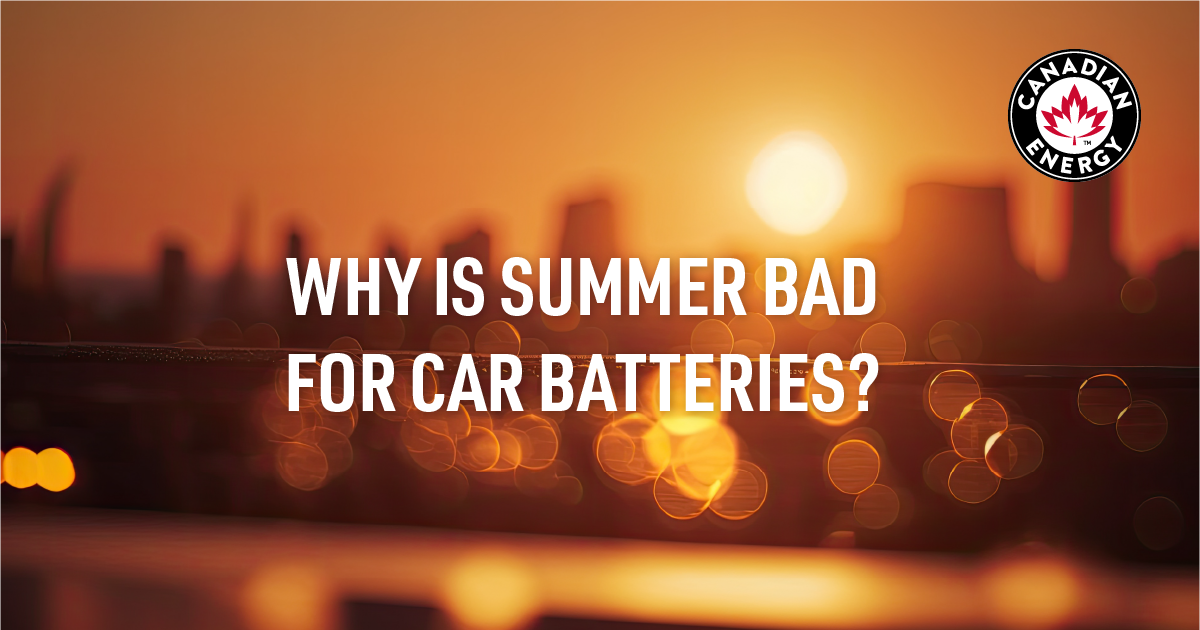Why Is Summer Bad for Car Batteries?

Why Your Vehicle's Battery Struggles In Extreme Heat
Before vehicles became increasingly compact under the hood, there used to be plenty of space for air to flow and help cool hard-working components, like the battery.
Today, however, that under the hood airflow space has been scaled back significantly, and most components have attractive-looking cowlings that cover them up, but don’t do the air flow any favours. That means on extremely hot days, where temperatures hover at or even exceed 30 C, your battery is literally ‘cooking.’
The operation of a battery relies on a chemical reaction, so temperature plays a big role in how it performs. Heat accelerates chemical activity, and it can also accelerate internal cell corrosion. If you live in an extremely hot city that faces above average temperatures all the time, that heat is going to permanently damage the capacity of your battery.
In short, extreme heat decreases the lifespan of your battery. Remember that batteries are also working harder in the summer as they fuel our stereo and our AC, so we’re asking it do more—and get hotter—at the very time it needs to cool down and do less.
Discover Battery's revolutionary product called MIXTECH can help with this as well. Extreme temperatures signicantly affect your battery’s performance. MIXTECH decreases high temperature acid concentrations and dramatically improves battery life.
How to Prevent Summer Battery Failure
Get a test.
The good news is, we’ve got a test for that. You don’t actually have to wait for your battery to suddenly die on you while you’re on your summer vacation.
We will test your battery with a carbon pile load tester. Measuring 14 volts at your vehicle’s battery terminals doesn’t tell you much about how your battery will perform when you actually try to start your vehicle — that’s where a variable load tester comes in handy. With a tester like this you can test batteries rated as high as 1,000 cold-cranking amps or 160 amp hours.
The tester simulates cranking loads with a 500A adjustable carbon pile — a carbon pile is just one big variable resistor. You can also test alternator charging voltage and relative starter current draw. During its 15-second test cycle, it will display voltage and current simultaneously on its large dual meters.
Take it easy.
While most car batteries last about 4 years, you can help inch some to the finish line, especially in summer, by keeping the stereo off when you’re parked on the side of the road, for example, so you’re not draining the battery unnecessarily.
Take the shady spot.
Some manufacturers say a battery’s ideal operating temperature is about 26 C. On days when the community you’re in peaks above that temperature, take steps to park in the shade or the garage if you can.
Be sensitive to smells.
In fact, you won’t even have to be that sensitive to the smell to know something’s amiss. Failing batteries often carry the pungent odour of rotten eggs. If that smell presents itself under the hood, it’s probably time to replace the battery. If you haven’t noticed any smells but you have suspicions your battery is nearly dead, read our post How Can You Tell if You Need a New Battery?
If you’re in the thick of summer and not sure how much life is left in your battery, bring it into one of our 18 locations across Canada or any of our dealers across Canada and we’ll perform a free battery test so you know for sure, and can carry on with peace of mind.
And, for more battery care information visit CDNRG.com/batterycare.
